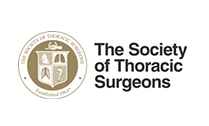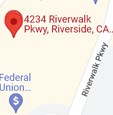Thoracic Oncology (Lung Cancer)
Cancer begins in cells, the building blocks that make up tissues. Tissues make up the organs of the body. Normal, healthy cells grow and divide to form new cells as the body needs them. When normal cells grow old or become damaged, they die, and new cells take their place.
Sometimes, this orderly process goes wrong. New cells form when the body does not need them, and old or damaged cells do not die as they should. The build-up of extra cells often forms a mass of tissue called a growth or tumor.
Tumor cells can be benign (not cancer) or malignant (cancer). Benign tumor cells are usually not as harmful as malignant tumor cells:
- Benign lung tumors
- Are rarely a threat to life
- Usually do not need to be removed
- Do not invade the tissues around them
- Do not spread to other parts of the body
- Malignant lung tumors
- May be a threat to life
- May grow back after being removed
- Can invade nearby tissues and organs
- Can spread to other parts of the body
Cancer cells spread by breaking away from the original tumor. They enter blood vessels or lymph vessels, which branch into all the tissues of the body. The cancer cells attach to other organs and form new tumors that may damage those organs. The spread of cancer is called metastasis.
Symptoms
Early lung cancer often does not cause symptoms. But as the cancer grows, common symptoms may include:
- A cough that gets worse or does not go away
- Breathing trouble, such as shortness of breath
- Constant chest pain
- Coughing up blood
- A hoarse voice
- Frequent lung infections, such as pneumonia
- Feeling very tired all the time
- Weight loss with no known cause
Most often these symptoms are not due to cancer. Other health problems can cause some of these symptoms. Anyone with such symptoms should see a doctor to be diagnosed and treated as early as possible.
Treatment
The choice of treatment depends mainly on the type of lung cancer and its stage. People with lung cancer may have surgery, chemotherapy, radiation therapy, targeted therapy, or a combination of treatments.
Surgery for lung cancer removes the tissue that contains the tumor. The surgeon also removes nearby lymph nodes.
The surgeon removes part or the entire lung:
- A small part of the lung (wedge resection or segmentectomy): The surgeon removes the tumor and a small part of the lung
- A lobe of the lung (lobectomy or sleeve lobectomy): The surgeon removes a lobe of the lung. This is the most common surgery for lung cancer
- All of the lung (pneumonectomy): The surgeon removes the entire lung
After lung surgery, air and fluid collect in the chest. A chest tube allows the fluid to drain. Also, a nurse or respiratory therapist will teach you coughing and breathing exercises. You'll need to do the exercises several times a day.
The time it takes to heal after surgery is different for everyone. Your hospital stay may be a week or longer. It may be several weeks before you return to normal activities.
Medicine can help control your pain after surgery. Before surgery, you should discuss the plan for pain relief with your doctor or nurse. After surgery, your doctor can adjust the plan if you need more pain relief.



















